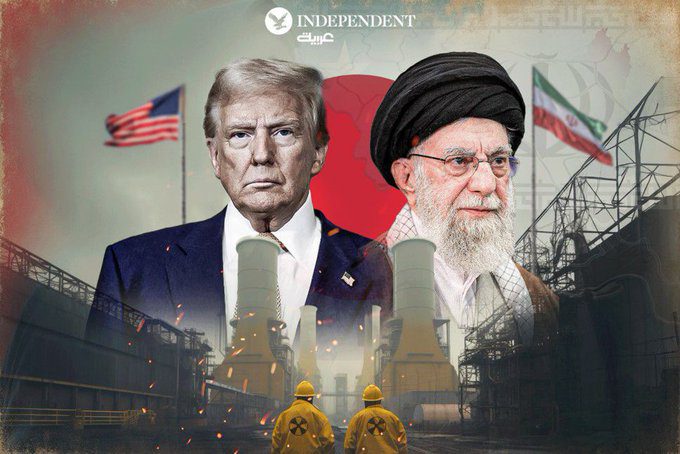ALTHOUGH LONG a factor in American strategic thinking, the Arctic now receives far more attention in Washington than in decades. Several forces are at play: increased use of Arctic maritime passages for military and commercial purposes; Russia’s historical focus on its northern territories, now magnified by its aggression against Ukraine; and, most salient geopolitically, China’s undisguised aim to be an Arctic power, using the developing Beijing-Moscow axis. America and its allies have yet to cope adequately with these challenges.
In the second world war, Greenland was critical to North Atlantic convoy routes, hosting significant American deployments. The Pentagon clearly understood the Arctic’s cold-war role, building the “DEW [distant-early-warning] Line” across Alaska, Canada and Greenland to detect nuclear-equipped Soviet bombers or ballistic missiles heading to the continental United States. Responding to the Sputnik satellite, in 1958 President Dwight Eisenhower sent the USS Nautilus, the world’s first nuclear-powered submarine, under the Arctic ice cap from the Bering Strait to the Atlantic, in the first submerged transit of the North Pole.
Unfortunately, cold-war victory led to geostrategic complacency, not just in Washington, but across NATO and bilateral American alliances with the likes of Japan and South Korea. This complacency is disappearing as the race for Arctic hegemony picks up, but the West has much to do, and quickly, to counter the rising threats from China and Russia.
The prize is potentially vast. Opportunities to exploit the fabled Northwest Passage across Canada, or its counterpart across Russia’s northern coast, are enormous. Greater access to Far North natural-resource deposits, both at sea and ashore, are also generating a lot of attention.
Updating the jocular insight of General Hastings Ismay, NATO’s first secretary-general, is a good starting point for the West’s Arctic grand strategy: “Keep the Chinese out, the Americans in, and the Russians down.” The alliance’s soft underbelly is now probably the Far North, not the Mediterranean. NATO has four front-line Arctic Ocean littoral states (Norway, Denmark, Canada and America) facing off with Russia, although the full mix of Arctic players and threats is far more extensive.
President Donald Trump remains sceptical of NATO and, indeed, the very concept of collective-defence alliances. Nonetheless, America is a front-line Arctic power, as Alaska’s congressional delegation relentlessly reminds Mr Trump, and the region’s importance to his presidency’s legacy should be obvious.
Unfortunately, American military resources are currently wholly inadequate to the task, with insufficient Navy and Coast Guard vessels worldwide, let alone those required for Arctic (and Antarctic) operations, such as specialised icebreakers. NATO’s admission of Finland in 2023 and Sweden in 2024 helped plug some of the gaps in the alliance’s Arctic naval capabilities.
William Seward, Abraham Lincoln’s secretary of state, looks ever more prescient. Had he not led the United States to purchase Alaska from Russia in 1867, and Russia had remained a North American power, the cold war might never have ended. He also tried to purchase Greenland from Denmark in 1868. Had he succeeded, today’s circumstances might have been easier.
Mr. Trump did not discover Greenland in 2019—when he first mooted buying it—but he has seriously complicated addressing how the huge island and its tiny population can once again be fully integrated into NATO defences. The 1951 US-Danish Defence of Greenland treaty is a workable basis for guarding against the thrusting Chinese and Russians, while allowing Greenland’s political status to evolve. America had as many as 17 military facilities there during the cold war, and today’s focus hopefully precludes China and Russia from acting covertly against NATO’s security interests.
Norway’s Svalbard islands graphically embody the alliance’s dilemmas. John Longyear, an American businessman, initially exploited their coal deposits in the early 20th century (more evidence of how ahistorical today’s American isolationists are). However, allowable under the 1925 treaty confirming Norwegian sovereignty, Svalbard also features Russian mining operations about 30 miles from its major habitation, appropriately named Longyearbyen.
A European intelligence official said recently that “Svalbard has to be near the top of a list of where Russia might try something.” This is not fantasy. China poses an analogous threat to Taiwanese islands like Kinmen and Matsu, just off the mainland, which it could readily seize without invading Taiwan outright. These are inviting targets, testing allied resolve in the Far East and the Far North. Can Svalbard’s treaty-based demilitarisation be preserved? As I discovered during my own visit there in April, the islands provide NATO’s adversaries excellent locations for naval or air bases.
Among NATO’s Arctic Ocean members, Canada is the hole in the doughnut. Persistent Canadian underspending on defence during Justin Trudeau’s several governments remains uncorrected. Helpfully, however, relations between America’s and Canada’s armed forces are otherwise quite good, including through long-term development of national missile defences for both countries. It is Canada’s politicians who have failed.
Moreover, disagreements between Canada and America over whether various aspects of the Northwest Passage are international waterways or Canadian territorial waters must also be resolved. One approach would be to agree that passage by NATO-member warships would be freely permitted in fulfilling their alliance obligations.
These are merely preliminary considerations. Formidable issues remain, including the need for massive increase in NATO defence expenditures, not just for the Arctic but worldwide. Cold-war victory didn’t “end history” in the Arctic any more than anywhere else. And, critically, isolationism can play no part in strategising about a region so close and vital to American national-security interests. Time to pick up the pace.
This article was first published in the Economist on August 11, 2025. Click here to read the original article.
© The Economist Newspaper Limited, London, 2025.
